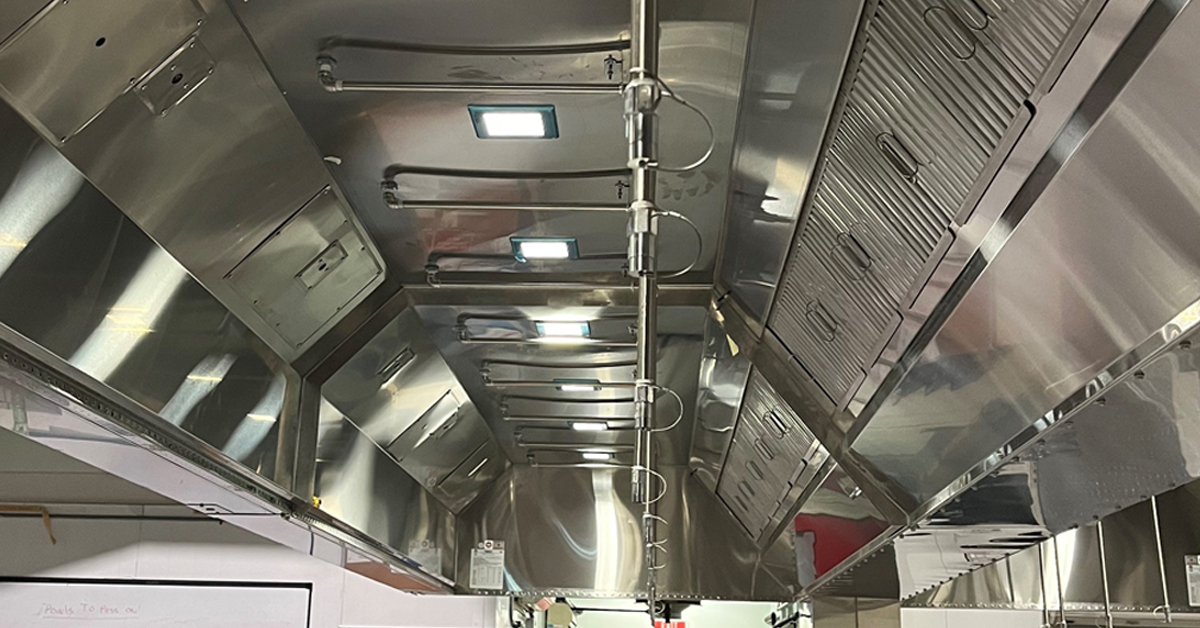Proper maintenance of your kitchen ventilation system can sometimes be overlooked. Some requirements, such as duct cleaning, are code mandated, while others are discretionary. It is safe to say that maintenance is often viewed as an expense (from an accounting perspective, it is) but should be viewed as an investment in trouble-free operation.
A commercial kitchen ventilation system is essential to any restaurant or food service establishment. It helps remove smoke, grease, and odors (if equipped with a pollution control unit PCU) from the air, ensuring a safe and comfortable environment for staff and customers. However, like any other mechanical system, it requires regular maintenance to ensure it runs efficiently and lasts as long as possible. This blog post will explore tips for maintaining your commercial kitchen ventilation system. A deeper explanation of each area can be provided by your Service Company.
Clean the Exhaust Hood Grease Extractors Regularly
One of your ventilation system’s most important maintenance tasks is cleaning the hood grease extractors. These grease extractors collect and channel grease and other contaminants from the air, reducing the accumulation in the ductwork. Some designs are non clogging and the grease extraction efficiency varies by manufacturer. By maintaining the grease extractors, it will minimize the fire hazard. Some designs can become clogged, making it imperative to have regular cleaning of the grease filters. If the grease extractors become clogged, it will also increase resistance to airflow, limiting the exhaust.
Depending on your extractor type, this may involve washing it in hot soapy water or putting it in a dishwasher using a degreaser. Grease extractors typically take a beating and should be checked regularly for integrity and replaced as necessary.
Keep the Hood Clean
The hood above your cooking equipment is another critical component of your ventilation system. It helps capture smoke and grease before entering the ductwork, reducing the risk of fires and improving the air quality in your kitchen.
It’s essential to clean it regularly to keep the hood working effectively. This may involve scraping off any built-up grease, washing it with hot soapy water, or using a degreaser. Be sure to follow the manufacturer’s instructions and use the appropriate cleaning products.
The mechanical parts of the system, the exhaust fan, duct work, make up air and controls will be the subject of another blog.
Schedule Regular Inspections
Finally, it’s essential to schedule regular inspections of your ventilation system. A professional technician can inspect the system for any issues, such as loose or damaged parts, and make necessary repairs or replacements. They can also clean the system thoroughly, ensuring it’s working efficiently and effectively.
In general, it’s a good idea to schedule an inspection at least once a year, or more frequently if you use your kitchen heavily. This will help identify any issues early before they become more significant and costly.
Maintaining your commercial kitchen ventilation system ensures a safe, comfortable, and efficient environment. Following these best practices and tips can keep your system running smoothly and avoid costly repairs or replacements. If you have any questions about maintaining your ventilation system, don’t hesitate to contact a professional technician for guidance.
Subscribe to kitchenventilation.com
Stay up to date by subscribing to Halton’s Commercial Kitchen Ventilation articles by entering your email address to subscribe. Halton will provide you with the latest information on commercial kitchen exhaust hoods, pollution control units, air handling, safety systems and maintenance tips. You will receive notifications of new posts by email.




